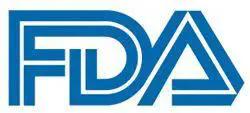News
Article
FDA Grants Accelerated Approval to Epcoritamab for Relapsed/Refractory Follicular Lymphoma
Author(s):
Key Takeaways
- Epcoritamab-bysp received FDA accelerated approval for relapsed or refractory follicular lymphoma after two or more systemic therapies.
- EPCORE NHL-1 trial showed an 82% overall response rate, with a 60% complete response rate and a 22% partial response rate.
The FDA has granted accelerated approval to epcoritamab-bysp (Epkinly) for the treatment of adult patients with relapsed or refractory follicular lymphoma following 2 or more lines of systemic therapy.
FDA

The FDA has granted accelerated approval to epcoritamab-bysp (Epkinly) for the treatment of adult patients with relapsed or refractory follicular lymphoma following 2 or more lines of systemic therapy.1,2
The regulatory decision was supported by data from the EPCORE NHL-1 trial (Study GCT3013-01; NCT03625037) in which epcoritamab elicited an overall response rate (ORR) of 82% (95% CI, 74.1%-88.2%) in the primary efficacy population (n = 127), which included a complete response rate of 60% (95% CI, 50.8%-68.4%) and a partial response rate of 22% (95% CI, 15.2%-30.3%).
Moreover, with a median follow-up of 14.8 months in responders, the median duration of response (DOR) with the agent was not yet reached (NR; 95% CI, 13.7-NR), and the Kaplan Meier–estimated DOR rate at 12 months was 68.4% (95% CI, 57.6%-77.0%). The median time to first response was 1.4 months (range, 1-3).
About EPCORE NHL-1: Eligibility, Treatment, Objectives
The open-label, multicohort, single-arm study enrolled patients with relapsed or refractory follicular lymphoma who previously received at least 2 lines of systemic treatment.
Those with central nervous system involvement, ongoing active infection, or known impaired T-cell immunity were excluded, as were those who underwent allogeneic hematopoietic stem cell transplant (HSCT) or solid organ transplant. Other exclusion criteria comprised having creatinine clearance under 45 mL/min, alanine aminotransferase greater than 3 times the upper limit of normal, and a cardiac ejection fraction below 45%.
Epcoritamab was administered through a 2-step up dosage schedule. In cycle 1, the agent was given at a dose of 0.16 mg on day 1, 0.8 mg on day 8, and 48 mg on days 15 and 22. For cycles 2 and 3, epcoritamab was given at a dose of 48 mg for days 1, 8, 15, and 22. For cycles 4 through 9, the agent was administered at 48 mg on days 1 and 15. For cycle 10 and beyond, it was given at 48 mg on day 1. Treatment continued until progressive disease or intolerable toxicity.
The efficacy of the agent was established based on ORR per Lugano 2014 criteria and independent review committee assessment, as well as DOR.
Baseline Characteristics
The median patient age was 65 years (range, 39-84), with 52% of patients aged 65 years or older. More than half of the patients were male (62%) and the majority were White (89%). Moreover, 85% of patients had stage III to IV disease and 25% had bulky disease. With regard to ECOG performance status, 95% had a status of 0 or 1 and 6% had a status of 2. Patients had received a median of 3 prior lines of therapy, with a range of 2 to 9. When broken down further, 36%, 32%, and 32% of patients received 2, 3, or 4 prior lines of therapy, respectively.
Most patients were refractory to previous CD20-targeted monoclonal antibody therapy (79%) or both a CD20-targeted monoclonal antibody and alkylator therapy. Moreover, 21% had prior exposure to rituximab (Rituxan), 19% previously underwent autologous HSCT, and 5% previously received CAR T-cell therapy. Approximately half (52%) of patients experienced disease progression within 2 years of their first systemic treatment.
Deep Dive Into Safety
The median duration of exposure to epcoritamab was 8 cycles (range, 1-33). Sixty-six percent of patients experienced serious toxicities and for 9% of patients, adverse effects (AEs) proved to be fatal. Dose interruptions due to AEs were required by 59% of patients, and 19% of patients experienced an AE that led to permanent discontinuation of the agent.
The most common AEs experienced by 10% or more of patients with relapsed or refractory follicular lymphoma who received the agent on the trial included cytokine release syndrome (all grade, 49%; grade 3/4, 0%), injection site reactions (58%; 0%), fatigue (37%; 5%), pyrexia (26%; 2%), edema (17%; 0%), COVID-19 (40%; 19%), upper respiratory tract infection (29%; 2%), pneumonia (17%; 13%), urinary tract infection (13%; 5%), herpesvirus infection (12%; 1.6%), musculoskeletal pain (28%; 0.8%), arthralgia (14%; 0.8%), rash (28%; 0%), diarrhea (26%; 1.6%), nausea (17%; 0%), abdominal pain (17%; 0.8%), constipation (16%; 0%), mucositis (12%; 0%), cough (20%; 0%), dyspnea (17%; 0%), headache (20%; 0%), neurological changes (13%; 0%), peripheral neuropathy and paresthesia (13%; 1.6%), dizziness (11%; 0%), insomnia (13%; 0%), and renal insufficiency (10%; 1.6%).
Moreover, AEs reported in less than 10% of patients that were considered to be clinically relevant included vomiting, pruritis, hepatotoxicity, immune effector cell–associated neurotoxicity syndrome, lower respiratory tract infections, cardiac arrhythmias, respiratory tract infections, pneumonitis, second primary malignancy, vision changes, cellulitis, febrile neutropenia, cardiac failure, cytomegalovirus infection, and sepsis.
References
- FDA grants accelerated approval to epcoritamab-bysp for relapsed or refractory follicular lymphoma. FDA. June 26, 2024. Accessed June 26, 2024. https://www.fda.gov/drugs/resources-information-approved-drugs/fda-grants-accelerated-approval-epcoritamab-bysp-relapsed-or-refractory-follicular-lymphoma
- Epkinly. Prescribing information. Genmab US, Inc; 2024. Accessed June 26, 2024. https://www.genmab-pi.com/prescribing-information/epkinly-pi.pdf









